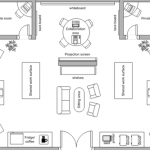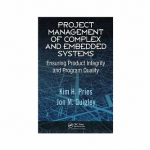 This article presents ten tips for Agile testing based on our experience. However, don’t expect to find the perfect test approach for your company or software project in this article. That is still something you will have to find out yourself!
This article presents ten tips for Agile testing based on our experience. However, don’t expect to find the perfect test approach for your company or software project in this article. That is still something you will have to find out yourself!
Several years ago I started as test manager on a J2EE project. The project team had switched from a waterfall approach to an Agile approach with Scrum a few months earlier. The first question the project manager asked me was, “Can you write a test plan for our first release?”
I quickly produced a project test plan that called for a test phase of a few months and a separate test team. It came complete with a capacity calculation per week for the testers, a MS-project document, and a matrix with all the quality attributes and the effort we should spent to test every attribute. What a mistake!
A few years later, we’ve learned a great deal about Agile testing. This article presents ten tips for Agile testing based on our experience. However, don’t expect to find the perfect test approach for your company or software project in this article. That is still something you will have to find out yourself!
1. Integrate the testers in the development teams
Teams are responsible for delivering software that meets expected requirements and quality. However, if we want teams to test the software, we must give them the knowledge to do it right. Testers have that knowledge. By integrating testers into the development teams, teams obtain the skills they need to test their software. When you try this, make sure you choose the right mix: one tester for three programmers is a fair but minimal number.
2. Use risk based testing
You can never test everything with the same (extensive) depth; even in a waterfall project you have to make choices. In an Agile project all the activities are time boxed so you have to make choices about how extensively you want to test each feature. We use a risk based approach to determine which test activities we are going to carry out for a feature during the iteration. The risk level of every feature is determined by the customer and the teams. It is a very transparent process so the customer knows exactly which test activities are executed for every feature.
3. Have testers review unit tests
In our organization the developers are responsible for creating and maintaining the unit tests. Unit tests are a very important part of our test harness. Developers often have a different way of thinking; for example, they tend to test only the success scenario.
To create unit tests that are as good as possible, our testers review the unit tests for all our high-risk items. The review has two advantages. First, the unit tests are improved because testers and developers supplement each other: the developer knows where the weak places in the source are, and the tester can use his knowledge of testing to give tips to improve the unit tests. Second, the testers know exactly which test cases are executed in the unit tests and can concentrate on executing other (e.g. higher-level) test cases.
4. Create a test automation framework and appoint a toolsmith
Automated testing is very important because new features and refactoring can introduce problems that can be difficult to find. By using an automated test framework, we can maintain quality levels during the iteration. Our testers are able to create new tests easily and quickly in the framework. We have a dedicated test engineer (we call him a tool smith) that maintains and optimizes the test automation framework, reviews the new automated tests of the testers and analyzes the daily test results. Testers in the teams can spend more time creating and extending automated tests because the toolsmith supports them.
 5. Display quality metrics in a public location
5. Display quality metrics in a public location
Almost every software project has a problem registration system, automated test results, and in some cases nightly or continuous build results. But how often do team members look at the results or count the open problems? We installed a monitor in the coffee room that displays the actual metrics of the currently open problems, the percentage of successful unit tests, the percentage of successful nightly builds, and the current state of the continuous build. By displaying the metrics in public the teams are confronted with the information. The information is no longer just a number in a system or a record with some other information in a metrics database.
6. Add a test scrum
One advantage of having a separate test team in one room is that the communication between the testers is improved. When you have a project like ours where the testers are distributed across several teams, the communication becomes more difficult. To solve this problem, we use a test scrum to align the test activities. Our test scrum is held twice a week and every team is represented by one tester. The test scrum is a scrum like the daily team scrum but focused on test activities. The test manager is the ScrumMaster of the test scrum.
7. Implement test retrospectives
Every team in our project holds a retrospective meeting at the end of the iteration. In the retrospective, the team discusses the process: what went well and what went wrong. The testers in the team learn and discover new ways to improve their tests. The sharing of knowledge with testers from the other teams helps everyone.
We have a test retrospective every iteration so the testers can exchange knowledge and experience and discuss problems they have. It is important that the retrospective is only related to test issues; you shouldn’t discuss team issues (they should be discussed in the team retrospective). As with the test scrum, the test manager is the ScrumMaster of the test retrospective.
8. Plan for open problems
We try to fix all the problems that we find during the iteration in that same iteration, but sometimes we end the iteration with open problems. The best way to handle open problems is to add them to the sprint backlog for the next iteration. By explicitly planning the management of the open problems, the chance that they are “forgotten” and pile up is very small.
9. Remember: Testing is still testing
When you test in an Agile software project you can still use the “traditional” test techniques. We use exploratory testing but also apply test techniques such as boundary value analysis, equivalence partitioning, cause/effect diagram, and pair-wise testing. Which test technique we choose for a feature depends on its risk category. Exploratory testing is used in every category; but if the risk is higher we also apply more formal test techniques. The challenge for the tester is to use a formal test technique without delivering extensive test documentation.
10. Start doing it!
The last but most important tip is start doing it! Don’t talk too much about how you are going to introduce testers, or which test approach is perfect for your organization. You are going to make mistakes or discover that the chosen approach doesn’t fit your organization. That’s a given. But, the sooner you start, the sooner you can begin learning and improving your test approach. With the retrospective meetings, you have the opportunity to adapt your test approach every month.
Conclusion
We delivered the new release of our software that we began developing in January. During the last two weeks of May, we did some more exploratory testing, solved the remaining problems, and prepared the delivery. I wrote no extensive test plan, did no capacity calculation, nor create a matrix with quality attributes. We just started testing and improved our testing every month.


 Ralph van Roosmalen
Ralph van Roosmalen















